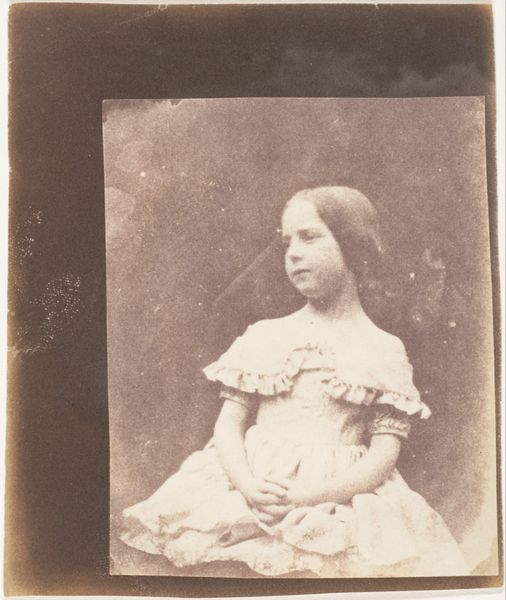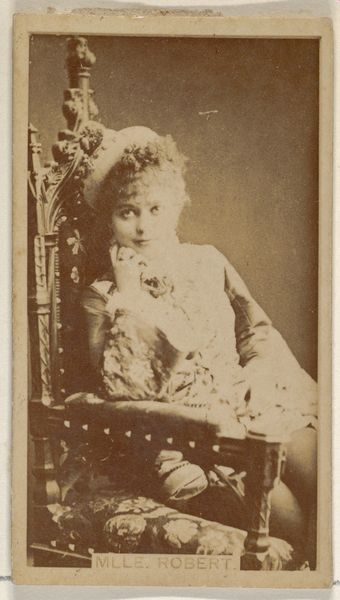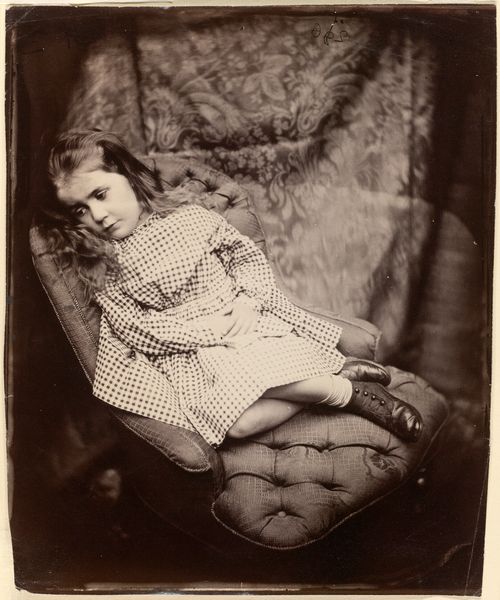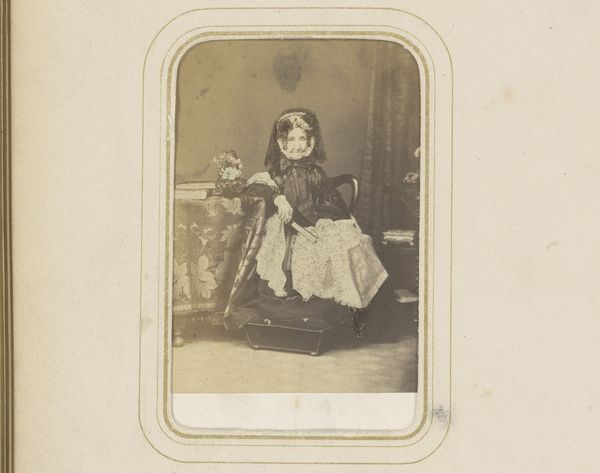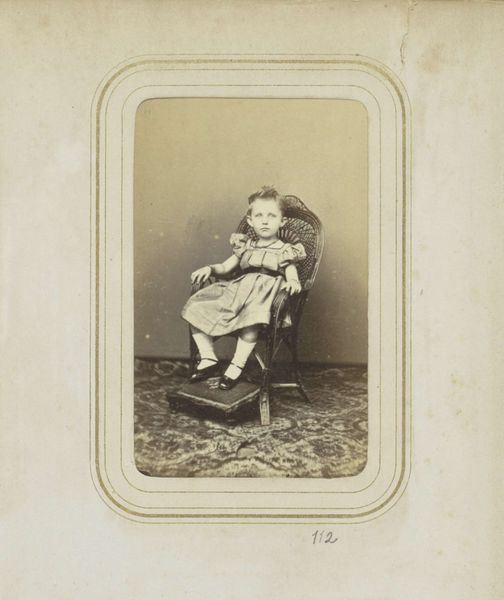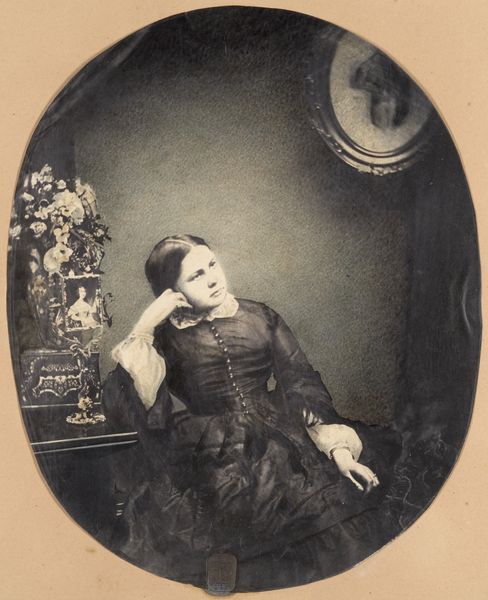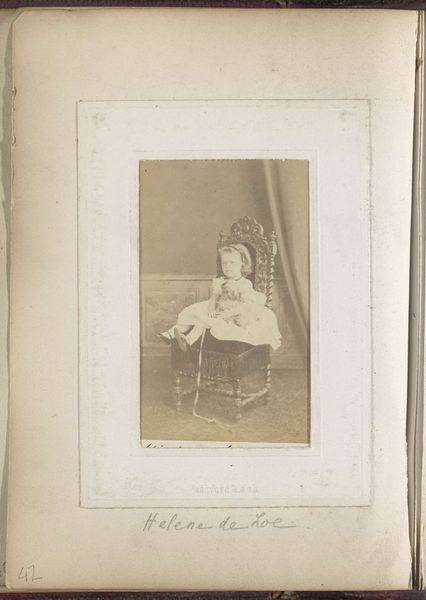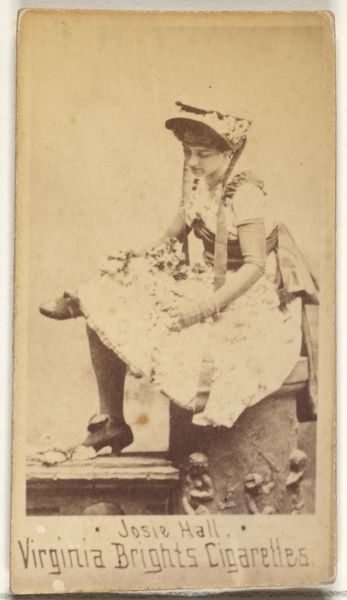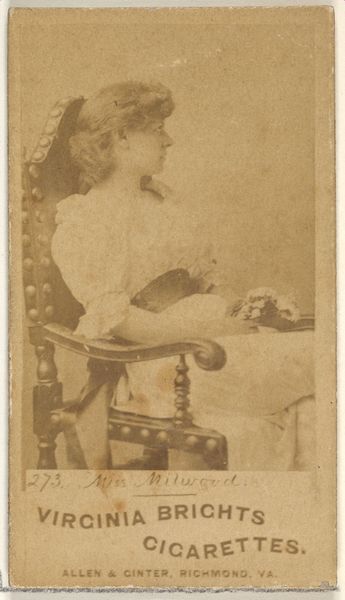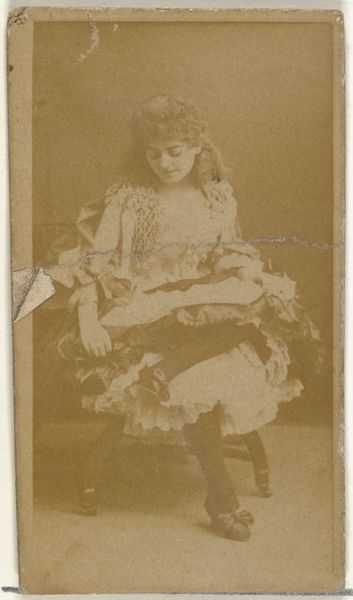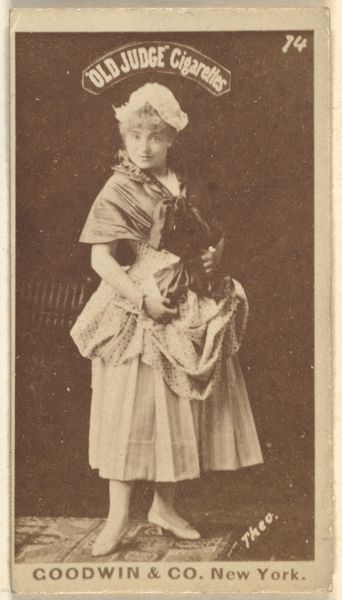
Dimensions: 8.3 × 6.1 cm (image, appro×.); 8.7 × 6.5 cm (paper)
Copyright: Public Domain
Editor: Here we have an untitled Daguerreotype, a photograph, made around 1870. It looks like a postmortem portrait of a young girl. It has a rather haunting stillness about it. What significance might it hold beyond being a record of someone's passing? Curator: Indeed. This image speaks to Victorian-era mourning practices, and the symbolic weight photographs could carry. Notice the elaborate garland in her hair. Do you think that's coincidental? Editor: Not really... Maybe it's a symbol of innocence or purity? Curator: Precisely. Flowers were often employed to soften the harsh reality of death, evoking a sense of peace, of eternal rest and beauty. Also note her serene expression. Death was frequently depicted as gentle, even beatific. Consider the context: infant mortality was high. Editor: So these photographs served a purpose beyond remembrance, perhaps a way of coping with loss and constructing a more palatable narrative around death? Curator: Exactly. It also provided a sense of lasting connection to a loved one, rendered eternal through this new technology of photography. Can you see, now, how deeply intertwined personal grief and cultural memory become within this single image? Editor: I can. It makes me think about how we memorialize people today, and what symbols we choose. I guess it's always about softening the blow. Curator: Precisely. Photography captured something profound that continues to resonate today, a yearning to connect with memory itself.
Comments
No comments
Be the first to comment and join the conversation on the ultimate creative platform.

